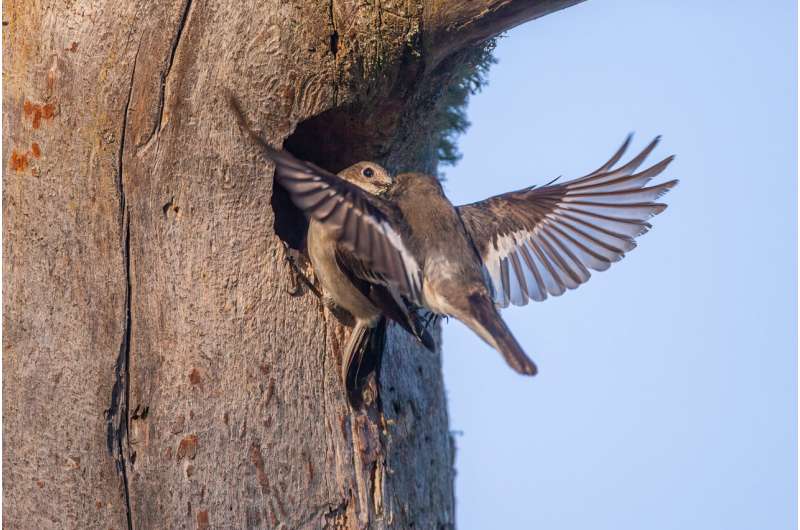January 18, 2022 report
Researchers find extra-pair paternity leads to cooperation in feeding and fending off threats in bird species

An international team of researchers has found that extra-pair paternity in pied flycatchers leads to cooperation between males and females in feeding and fending off threats. In their paper published in Proceedings of the National Academy of Sciences, the group describes experiments they conducted with wild pied flycatchers given boxes for nesting and what they learned from them.
Prior research has shown that many bird species are mostly monogamous and that such monogamy helps improve the gene pool. In this new effort, the researchers wondered about the behavior of generally monogamous bird species who are faced with unusual circumstances—predators that require the combined efforts of multiple birds to protect the young. To learn more about such instances, the researchers looked to pied flycatchers—a species native to Europe that migrates back and forth to northern parts of Africa. After observing multiple males banding together to ward off predators, they wondered about the reasons for such cooperation—they suspected the birds were protecting not only the young of their mate, but those they had sired with other females.
To find out if this was the case, the researchers set up 44 nesting boxes in groups of threes—each box became the home of a male and a female and their offspring. The researchers studied their mating behavior and then placed stuffed predator replicas near the boxes to learn more about the defensive strategies of the birds.
In watching the birds and recording their actions, the researchers found that it was common for the male birds to mate with other nearby females when their companion was off foraging. It was also common for those matings to result in extra-pair paternity. But most interesting was that the males seemed to know which offspring were theirs. If a predator arose near nests that did not house their offspring, the males would not assist in helping to ward off the threat. But if the threat arose near hatchlings that they had sired (determined genetically by the researchers), they would help to fight off the threat as strongly as they did those in their home nest. The researchers found that the males would also not only help their mate to feed their offspring, but the mothers of their other offspring as well.
More information: Extra-pair paternity explains cooperation in a bird species, Proceedings of the National Academy of Sciences (2022). DOI: 10.1073/pnas.2112004119.
Journal information: Proceedings of the National Academy of Sciences
© 2022 Science X Network





















